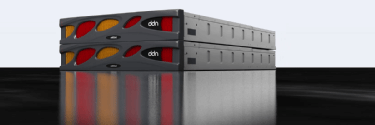News
News Archive
-
July 01, 2025
01
Jul'25
The road to quantum datacentres goes beyond logical qubits
Industry experts gathered in London to explore the missing pieces needed to deploy quantum computing at scale in datacentres
-
July 01, 2025
01
Jul'25
ING Bank transforming operations through agentic AI
Netherlands-headquartered international bank is using artificial intelligence throughout its operations
-
July 01, 2025
01
Jul'25
Openreach adds 21 locations in broadband upgrade footprint
UK’s largest broadband network provider makes significant addition to infrastructure, staying on track to make full-fibre gigabit available to 30 million premises in all corners of the UK by 2030
-
July 01, 2025
01
Jul'25
Firms must adopt skills-based strategy for human-AI workforce
To unlock the value of AI agents, organisations must shift to a skills-based strategy and manage their new digital employees with the same rigour as their human workforce, according to a senior Workday executive
-
June 30, 2025
30
Jun'25
Government launches Gov.uk App
The public beta version of the app will allow users to access government services on their phones, based on their needs and interests
-
June 30, 2025
30
Jun'25
Second AI Energy Council meeting looks to forecast future demand
Given Labour’s ambition to use AI to drive economic growth, questions need to be answered on how the nation’s energy grid will cope
-
June 30, 2025
30
Jun'25
How modular design is reshaping India’s datacentre landscape
Modular datacentre infrastructure can help Indian enterprises build faster, greener and more flexible datacentres to cope with the demand for local data storage and growing use of AI and edge computing
-
June 30, 2025
30
Jun'25
Gartner: Build trust in data before betting the business on AI
At its Data & Analytics Summit in Sydney, Gartner analysts advised businesses to prioritise data trust over artificial intelligence hype and outlined the coming era of autonomous business processes guided by AI agents
-
June 27, 2025
27
Jun'25
Citrix Bleed 2 under active attack, reports suggest
Days after news emerged of a Citrix NetScaler flaw comparable in its scope and severity to 2023’s infamous Citrix Bleed, there are already clear indicators that threat actors are taking advantage of the critical vulnerability
-
June 27, 2025
27
Jun'25
Scattered Spider cyber gang turns fire on aviation sector
Multiple reports are emerging of cyber attacks on airlines – Google Cloud’s Mandiant believes them to be linked
-
June 27, 2025
27
Jun'25
Over 2 million affected by US supermarket breach
Belgian-Dutch supermarket operator Ahold Delhaize reveals that more than two million people, including employees, had their data compromised following a November 2024 ransomware attack
-
June 27, 2025
27
Jun'25
Interview: Developing a CIO strategy for artificial intelligence
We speak to Chris Loake, group CIO at Hiscox, about the roll-out of Microsoft Copilot and how to succeed with AI projects
-
June 27, 2025
27
Jun'25
Ciaran Martin: AI might disturb attacker-defender security balance
The founder of the National Cyber Security Centre spoke with Computer Weekly at Infosecurity Europe 2025 about how artificial intelligence might disturb the attacker-defender security equilibrium
-
June 27, 2025
27
Jun'25
MPs propose ban on predictive policing
MPs are attempting to amend the UK government’s forthcoming Crime and Policing Bill so that it prohibits the use of controversial predictive policing systems
-
June 27, 2025
27
Jun'25
UK joins global health regulator network for safe use of AI
The Medicines and Healthcare products Regulatory Agency has become a founding member of the HealthAI Global Regulatory Network, aiming to get trustworthy artificial intelligence tools into the NHS
-
June 27, 2025
27
Jun'25
Fujitsu’s grip on HMRC loosening but bags of taxpayer cash still to be made
The complicated and risky nature of replacing IT suppliers in major government contracts means Fujitsu will be cashing in for years to come
-
June 27, 2025
27
Jun'25
Silicon Valley execs sworn in to US Army reserves specialist unit
Four technology executives are brought into the military to make the Armed Forces ‘more lethal’, reflecting softening attitudes throughout the sector towards ‘the business of inflicting violence’
-
June 26, 2025
26
Jun'25
Seven main suspects under police investigation in national Post Office probe
The national police investigation into crimes related to the Post Office scandal expects the number of suspects to continue to rise
-
June 26, 2025
26
Jun'25
Sky ECC distributor released from French custody pending trial
Canadian businessman accused of distributing Sky ECC encrypted phones has been released on bail after over four years in custody without a trial
-
June 26, 2025
26
Jun'25
British hacker IntelBroker faces years in a US prison cell
US authorities have unsealed charges against 25-year-old hacker Kai West, aka IntelBroker, accusing him of being behind multiple cyber attacks
-
June 26, 2025
26
Jun'25
Next phase of fintech reflected in strong financials, says World Economic Forum
Digital-powered finance firms might not be growing their customer base as fast as the immediate post-pandemic period, but revenue and profits are strong
-
June 26, 2025
26
Jun'25
Glasgow Council services remain offline a week after cyber attack
Disruption continues a week after core services at Glasgow City Council were forced offline following a cyber attack on a third-party IT services provider
-
June 26, 2025
26
Jun'25
UK rail network gets on track for enhanced connectivity
Partnership between UK rail infrastructure provider and communications firm aims to boost 4G/5G connectivity on trains and in stations, tackle signal blackspots in tunnels, and pave the way for train performance improvements across Britain
-
June 26, 2025
26
Jun'25
Aviva Stadium upgrades 5G infrastructure
Ireland’s premier sporting venue upgrades communications infrastructure to offer 5G capability claiming to have improved significantly mobile performance, coverage and capacity
-
June 26, 2025
26
Jun'25
Public sector spends £16.6bn directly with tech suppliers every year
Government and public sector bodies spent big on technology last year, but the majority of the money went to large IT suppliers, with 84% of the total spend going to so-called ‘tech titans’, according to a report from Tussell
-
June 26, 2025
26
Jun'25
UK IT infrastructure processes images looking back 20 billion light years
A UK team prepared infrastructure to process images from world’s largest digital camera and provide on-demand access to global science community
-
June 26, 2025
26
Jun'25
AI competitiveness maxing out US bandwidth
Research finds growing demand to bring compute and data closer to the edge for real-time performance. Hyperscalers and datacentres are securing dense metro networks to support AI inference and regional interconnects
-
June 25, 2025
25
Jun'25
Swisscom claims world first with sovereign SASE connectivity service
SASE applied at heart of leading Swiss telco’s converged networking and cyber security offering to deliver customised, advanced networking and security services directly from its own infrastructure
-
June 25, 2025
25
Jun'25
Latest Citrix vulnerability could be every bit as bad as Citrix Bleed
A Citrix NetScaler flaw that was quietly patched earlier in June is gathering widespread attention after experts noted strong similarities to the Citrix Bleed vulnerability that caused chaos in late 2023
-
June 25, 2025
25
Jun'25
Satellite data to drive innovation in UK public services
UK Space Agency announces £2.5m funding for research into applications for the use of satellite data to help transform the delivery of public services
-
June 25, 2025
25
Jun'25
Thames Freeport lands multisite private 5G network
Verizon Business and Nokia to deliver multiple dedicated infrastructures to enhance port operations with AI-driven data analytics, autonomous vehicle control and real-time logistics orchestration
-
June 25, 2025
25
Jun'25
Brightspeed, Calix conclude ‘innovative, seamless’ 50G-PON test
US broadband and telecommunications services provider’s technology advancement centre tests passive optical fibre network capabilities that it says will support rapid, scalable growth today and for years to come
-
June 25, 2025
25
Jun'25
Arelion upgrades Scandinavian network to support AI ‘superhighway’
IP backbone and diverse connectivity services provider deploys 1.6Tbps and scalable 400G coherent pluggable optics for network between Oslo, Stockholm and Copenhagen
-
June 24, 2025
24
Jun'25
Wrongly convicted subpostmasters may have to wait another year for redress
MPs on the Public Accounts Committee say the government has not done enough to contact all those who qualify for Post Office scandal compensation schemes
-
June 24, 2025
24
Jun'25
UK ransomware costs significantly outpace other countries
UK organisations hit by ransomware attacks paid much higher ransoms than in other countries over the past 12 months, according to study
-
June 24, 2025
24
Jun'25
FWA flies with global 5G subs set to near three billion by end of 2025
This year’s edition of analysis of mobile communications sector highlights a significant shift in how service providers are monetising 5G, particularly through fixed wireless access, and points to a dramatic increase in 5G traffic over the next five...
-
June 24, 2025
24
Jun'25
Zopa Bank launches current account earlier than expected
Zopa launches its UK current account, five years after reinventing itself as a challenger bank
-
June 24, 2025
24
Jun'25
Interview: Pure Storage on the AI data challenge beyond hardware
We talk to Pure Storage’s vice-president of AI infrastructure about data quality for artificial intelligence and the need for data engineering to ensure the integrity, completeness and appropriateness of data for AI training
-
June 24, 2025
24
Jun'25
One year since being freed, Julian Assange still a victim of state secrecy
If the State Department’s arguments prevail in FOIA litigation, the truth about US action against Julian Assange and WikiLeaks journalists will never be known
-
June 24, 2025
24
Jun'25
CMA consults on Google’s search dominance
The Competition and Markets Authority is consulting on whether Google should be designated with strategic market status
-
June 23, 2025
23
Jun'25
Widening Middle Eastern war increases cyber risk
With the entry of the US into the widening Middle Eastern conflict, cyber risk is likely to increase across the board
-
June 23, 2025
23
Jun'25
Industrial strategy: Takeaways for UK tech innovations
Labour wants to put the UK at the forefront of tech innovation. Its industrial strategy offers a funding boost for tech and lighter-touch regulation
-
June 23, 2025
23
Jun'25
Europe’s semiconductor leaders are racing to meet energy demands
Innovative ideas are discussed at Leti Innovation Days, as datacentres swell under the weight of AI workloads
-
June 23, 2025
23
Jun'25
Eutelsat secures €1.35bn to expand satellite offer
Contemplated major capital increase designed to secure Eutelsat’s long-term strategic vision has been anchored by the French state and other reference shareholders
-
June 23, 2025
23
Jun'25
Autonomous vehicle technology market set to roll
Research from internet of things specialist analyst projects rapid adoption of autonomous vehicle technology over the next five years.
-
June 23, 2025
23
Jun'25
Interview: Rolf Krolke, regional technology director, The Access Group
We talk to The Access Group’s technology director for APAC about integration and ongoing management of legacy systems in an extremely acquisitive company, and the worldwide storage refresh he’s overseeing as part of that process
-
June 23, 2025
23
Jun'25
Police to gain powers to grab online data when they seize phones and laptops
Academics and civil liberties experts say that proposed ‘authoritarian’ powers to allow police to trawl online and cloud services used by owners of seized devices should require approval from a judge
-
June 20, 2025
20
Jun'25
Cyber Essentials certifications rising slowly but steadily
The number of businesses attaining the NCSC Cyber Essentials certification continues to increase, but much more can be done to raise awareness of the scheme
-
June 20, 2025
20
Jun'25
M&S, Co-op attacks a ‘Category 2 cyber hurricane’, say UK experts
The UK’s Cyber Monitoring Centre has published its first in-depth assessment of a major incident, reflecting on the impact of and lessons learned from Scattered Spider attacks on M&S and Co-op
-
June 20, 2025
20
Jun'25
Election workers’ data stolen in cyber breach of Oxford City Council
Oxford City Council election workers had personal information stolen by cyber attackers in an attack over the weekend of 7-8 June. The council has stated that most disrupted systems are back online






